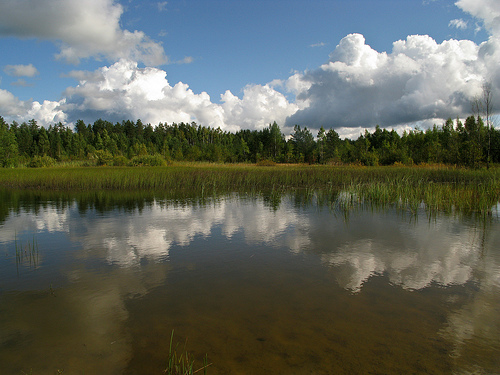

Location: 70 km East of Tallinn Map
Area: 725 km2 (280 sq mi)
Lahemaa National Park is located on the shores of the Gulf of
Finland in Harju County and Länsi-Viru County; it extends to the
area of Kadrina, Kuusalu, Loksa and Haljala municipalities in
Northern Estonia.
The national park is the oldest in Estonia
and the entire former Soviet Union, established in 1971. The name of
the park comes from Professor Johannes Gabriel Granö, who in 1922
classified Estonia's terrain. At that time, the name referred only
to the gulfs of the coastal strip of the Gulf of Finland, the four
largest of which are Kolgan, Haran, Erun and Käsmunlahti.
The
surface area of the park is 72,500 hectares, of which a third is sea
area. The guide and visitor center of the national park is located
in Viitna village of Kadrina municipality.
Lahemaa National
Park has sea areas and sea bays, traditional coastal villages (such
as Altja), manors, long peninsulas, various swamp and forest areas,
river valleys – eight rivers – and untouched wilderness.
24
species of fish, 50 mammals, 222 birds and more than 800 plant
species have been observed in the national park. You can only go to
the Aarni areas with a guide.
Lahemaa National Park is divided into different protection zones, those that are accessible to hikers, cyclists and motorists on paths and roads all year round, those that are closed seasonally (especially in spring when waterfowl breed), and finally into total reserves that are People are not allowed to enter and in which nature is left to itself. In recent years, efforts have been made to make the area more attractive for eco-tourism. After Estonia gained independence, hotels and restaurants opened on the historical former estates Palmse, Sagadi and Vihula, which have been restored since the 1980s. New holiday quarters were created in the coastal towns.
Location: 8 km (5 mi) North of Viitna
Tel. 324 0070
Open: May- Sep: 10am- 7pm daily
Oct- Apr: 10am- 3pm Mon- Fri
Palmse Manor House is located 8 km (5 mi) North of Viitna in
the center of the Lahemaa National Park. The estate was
constructed in 1677 by the von der Palen family. This German
family moved to Russian Empire and served it for several
centuries. Peter Ludwig von der Palen was a member of the
imperial court of Catherine the Great and initially enjoyed
sympathy of her son Emperor Paul I. However after falling in
disgrace he devised a plot to murder emperor Paul in Saint
Petersburg. Another von Palen, Carl Magnus, became general-
major in the Russian Army and served in the Fatherland War of
1812 against Napoleon Bonaparte.
The manor that you see
today was rebuild in 1785. Entrance gate of the estate dates to
the same time period. Coach house, stable, greenhouse and a barn
were preserved. In total there are about 20 buildings that still
stand from the original estate. Von Palen lost their Palmse
Manor in 1925. It was nationalized and turned into a museum.
Cavalier House with a green house was turned into a hotel.
Additionally the Palmer Estate has a wine cellar and a
restaurant. The main house was a chief residence of the von der
Palen family. It was divided into two sides. One for the women
and another for the men of the family. The museum offers an
unique chance to dress in old clothes.
As you walk
around the Palmse Estate you can see several piles of stones.
They were brought here by the local peasants. Von der Palen
family offered locals grain in the time of famine. Once the
famine was over the people who were saved would clear fields of
the family from the rocks and stock them in piles. Several large
boulders are also spread around. According to local legends the
island the region was inhabited by the demons who turned into
stone by the power of a Christian nun who came here to live and
pray.